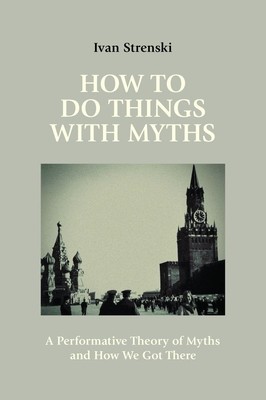
- We will send in 10–14 business days.
- Author: Ivan Strenski
- Publisher: Equinox Publishing
- ISBN-10: 1800504772
- ISBN-13: 9781800504776
- Format: 15.6 x 23.4 x 1.4 cm, minkšti viršeliai
- Language: English
- SAVE -10% with code: EXTRA
Reviews
Description
How to Do Things with Myths assembles a radically updated collection of the author's oft-cited publications on myth. Together, they tell how theories of myth have changed and led to a novel "performative" theory of myth. Beginning from its mid-19th-century foundations with philologist, Friedrich Max Muller, myths had been conceived in textual terms as quasi-biblical, static narratives. Not until the impact of ethnographic studies of traditional societies in the early 20th century did myths come to be regarded in situ as living agents shaping their societies. Leading a movement against Muller's static, textual view of myths were his French sociological critics, notably Emile Durkheim and his equipe. The Durkheimians felt that myths mattered because of what they "did" by functioning within human societies. Adopting the Durkheimian notion of function was Bronislaw Malinowski. But as a pragmatist and positivist, Malinowski narrowed his conception of myths to utilitarian terms. In place of Malinowski's utilitarianism, the author proposes a "performative theory" of myths - a theory freeing myths for a wider range of agency in culture, unrestricted by Malinowski's behaviorism and positivism. Conceived as "important stories," myths can thus "do things" in many, often subtle and unquantifiable, ways, depending upon a given culture's own value system. Conceptually and theoretically, a performative theory situates itself with respect to the efforts of some of the most popular contemporary myth theorists -- Bruce Lincoln, Mircea Eliade, Claude Levi-Strauss, Georges Dumezil, Robert A. Segal and Jonathan Z. Smith.EXTRA 10 % discount with code: EXTRA
The promotion ends in 22d.22:01:40
The discount code is valid when purchasing from 10 €. Discounts do not stack.
- Author: Ivan Strenski
- Publisher: Equinox Publishing
- ISBN-10: 1800504772
- ISBN-13: 9781800504776
- Format: 15.6 x 23.4 x 1.4 cm, minkšti viršeliai
- Language: English English


Reviews